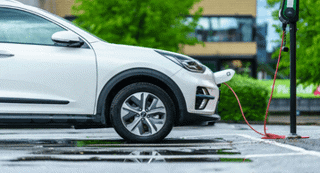Fleet drivers working alone are traditionally much harder to safeguard than their office-based colleagues says Trimble.
New research suggests that while some companies are beginning to use the latest “in-vehicle” technology to redress the balance, many aren’t taking full advantage of the benefits it can bring.
A survey into the UK fleet industry by telematics experts Trimble highlights concerns for driver safety. More than half of surveyed managers believe driver safety to be a priority, yet only a third believes technology can help.
However, according to Trimble, recent advances in telematics technology allow employers to monitor drivers’ location, status and driving behaviour more easily.
“Trimble has seen a shift in the reasons why investment in technology is being made, but the next generation of technology may bring even further benefits to help companies manage the risks around driver safety,” says Andrew Yeoman, managing director of Trimble MRM in EMEA.
“Companies have a responsibility around duty of care to their employees. If they are in an office this is relatively straightforward, but for field employees it can be another story.
“Once a worker is out on the road and alone, it is far harder to understand the risks they may encounter and to help them recognise and mitigate these risks to protect themselves and others.”
Increased legislation around lone workers has increased awareness of driver safety but there is still some uncertainty as to how to implement effective measures.
Jeff Colburn, leader of UK Marsh Risk Consulting, says that current health and safety legislation means that if an employee is involved in a vehicle accident while working, the business could face unlimited fines and possible jail sentences for directors and line managers, as well as the impact this can have on a company’s reputation.
“We have noticed increased concern from our clients regarding driver safety but there are still misconceptions from some,” says Colburn.
“Some employers believe that they don’t need to worry about managing occupational road risk because their employees drive their own vehicles.
“It is important to realize that, irrespective of whom the vehicle belongs to, it is the employer’s responsibility to ensure that the vehicle is roadworthy, maintained, taxed and insured for business use and has a current MOT certificate.
“By implementing a systematic and comprehensive programme to manage occupational road risk, businesses could benefit from decreased costs, improved compliance and greatly enhanced safety of its drivers.”
For more on fleet management, come to the Fleet News fleet management section.

















Login to comment
Comments
No comments have been made yet.